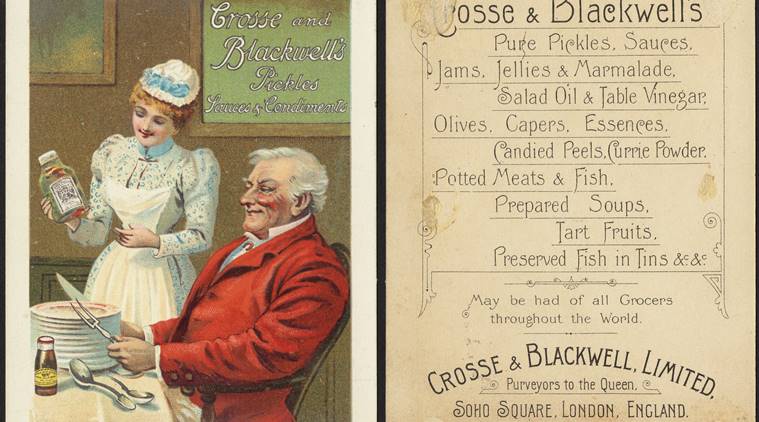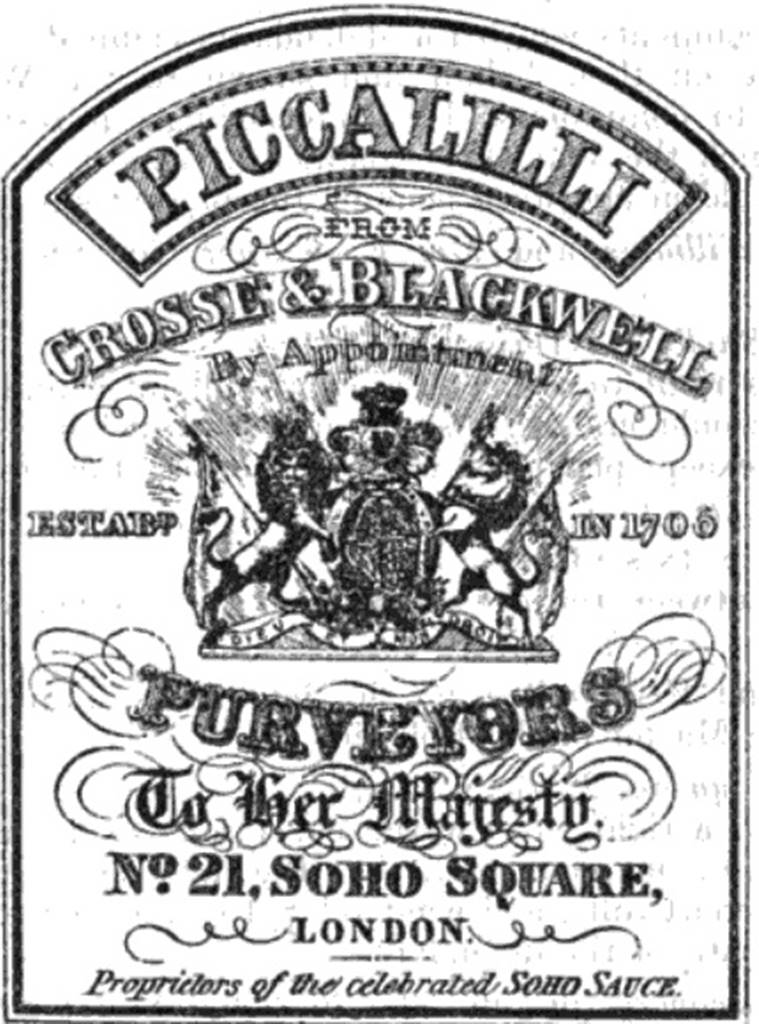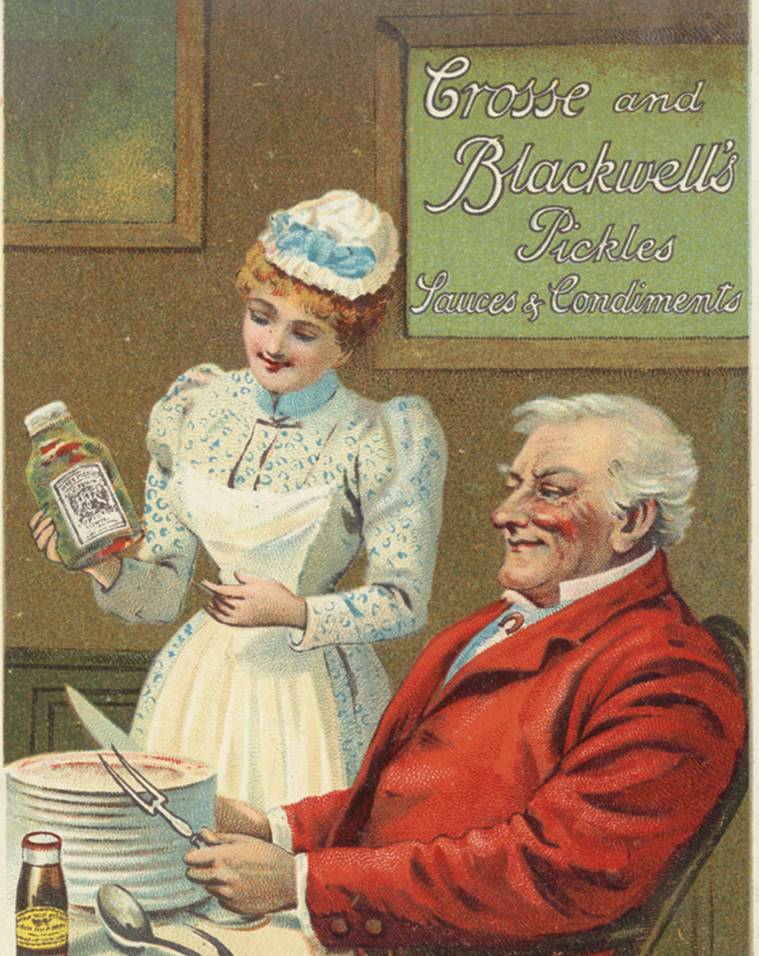- India
- International
London’s Victorian era pottery find unearths tale of how Indian food became popular in Britain
Food from India did not just form a major part of import, but had over time become an essential part of British diet.
 The site of the archaeological find was previously occupied by the Victorian era food manufacturing company Crosse and Blackwell. (Source: Wikimedia Commons and Boston Public Library)
The site of the archaeological find was previously occupied by the Victorian era food manufacturing company Crosse and Blackwell. (Source: Wikimedia Commons and Boston Public Library)
The crossrail project workers in London recently dug out an unusual collection of archaeological remains. Consisting more that 13,000 condiment and jam jars from the 19th century, the discovery is said to provide new insights into the history of British food, especially the external influences on it. As per the Museum of London Archaeology, this is the largest collection of pottery discovered from a single archaeological site in London.
The site of the archaeological find was previously occupied by the Victorian era food manufacturing company Crosse and Blackwell. The company that had been in existence since 1706, moved to the Soho area of London in 1838 and developed factory and warehouse space there for the sake of food manufacture on a larger industrial scale. In particular, Crosse and Blackwell specialised in the manufacture of canned and bottled products such as jams, condiments, chutneys and the like. Interestingly, when the East India Company sent its first troops to India, Crosse and Blackwell sent a representative along. The recipes with which he returned aided the company in producing some of its most well-known products, such as Captain White’s Oriental Pickle and Curry Powder and Abdool Fygo’s Chutney.
 The company that had been in existence since 1706, moved to the Soho area of london in 1838 and developed factory and warehouse space there for the sake of food manufacture on a larger industrial scale. (Wikimedia Commons)
The company that had been in existence since 1706, moved to the Soho area of london in 1838 and developed factory and warehouse space there for the sake of food manufacture on a larger industrial scale. (Wikimedia Commons)
Britain’s culinary culture has been developed and defined to a large extent by the country’s colonial endeavours. In fact, the ubiquity of food from the colonies in the British everyday diet has resulted in food-related artefacts becoming a major source for historians studying the British empire. The recent discovery will open up new doors for an analysis of how food played a major role in sustaining the empire.
Elaborating on the importance of food in the British empire, historian Troy Bickam writes: “The food trade was essential to the success of the empire and the military fiscal state that helped fuel it.” The tax revenue generated from the extensive food trade helped in sustaining and extending the colonial markets. At the same time, for an emerging consumerist society in 18th century in Britain, food was the foremost important commodity on which a large portion of the household income was being spent. Considering that most edible items during this period entered the isles through imperial commerce, food-related artefacts are imperative for understanding the growth of the British empire.
Food from India did not just form a major part of import, but had over time become an essential part of the British diet. Anyone visiting the UK cannot miss the omnipresence of curries, chutneys and samosas in fast food joints, restaurants and culinary habits of an average white. Memsahibs, especially wives of colonial officers in India, played the strongest agents in modifying the food habits of the middle class British.

 Memsahibs, especially wives of colonial officers in India, played the strongest agents in modifying the food habits of the middle class British. (Wikimedia Commons)
Memsahibs, especially wives of colonial officers in India, played the strongest agents in modifying the food habits of the middle class British. (Wikimedia Commons)
Since the second half of the nineteenth century, a large number of British periodicals such as The Ladies’ Companion and The Ladies’ Treasury started carrying recipes of Indian curries and chutneys, encouraging the intake of Indian food both for economic and nutritional reasons. Readers often interacted with the writers of these periodicals, asking them for specific recipes. In one instance, a reader asked for the perfect recipe for a Bengali chutney, to which the periodical Queen responded with recipes of two variant. From the 1860s on, products such as the curry paste, the mulligatawny paste and Indian chutney started selling in British stores on a mass scale.
The Indian curry and chutney were particularly enjoyed by the British and remains a favourite till date. An examination of the names of some chutney brands provide an insight into the colonial origins of their recipes. For instance, the Colonel Skinner’s mango chutney is named after an officer in India who had his own regiment. The other popular brand is Major Grey’s mango chutney named after one of the Bengal lancers.
By the late 19th century, it had become necessary for food manufacturers like Crosse and Blackwell to incorporate recipes of Indian chutneys and curry powders as part of their production in order to serve the appetite of British consumers who had by now been conditioned into an imperial diet of food from the East.
Apr 24: Latest News
- 01
- 02
- 03
- 04
- 05






































